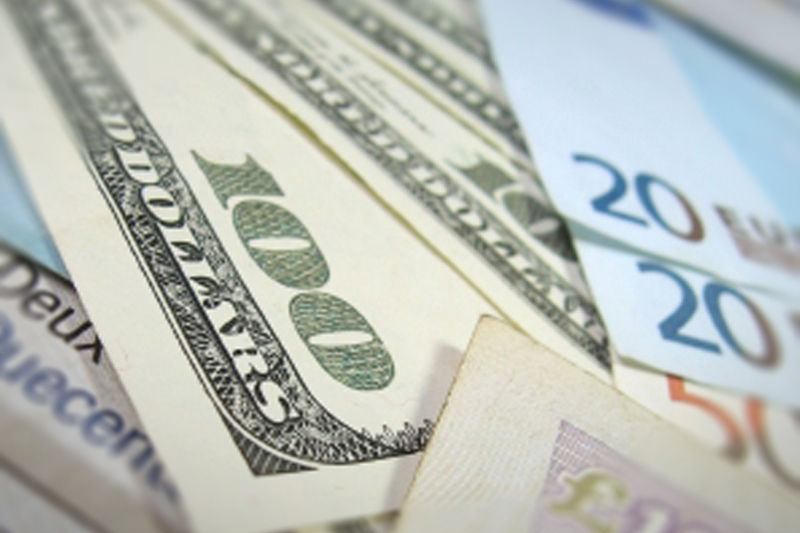Investing.com -- The euro fell mildly against the U.S. dollar on Monday amid unexpected developments in the Greek debt negotiations and stronger than expected U.S. economic data.
EUR/USD dipped 0.0033 or 0.31% to 1.0924, remaining under 1.10 for the sixth consecutive session. The pair fluctuated between 1.0888 and 1.0979 on a choppy day of trading. EUR/USD has been relatively stable since the dollar appreciated sharply against the euro late last month. Over the last 11 sessions, the pair has moved less than 1% in either an up or down direction.
EUR/USD likely gained support at 1.0867 the low from May 28 and was met with resistance at 1.1006 the high from May 29.
While currency traders await a potential deal between Greece and its troika of creditors on an agreement that could unlock critical aid to the beleaguered Mediterranean nation, there were significant developments on Monday in the slow-moving negotiations. European Central Bank president Mario Draghi and International Monetary Fund head Christine Lagarde headed to Berlin where they will be joined by German and French leaders for a series of high-level meetings aimed at mapping out a strategy for approaching what could be the final round of talks.
The meetings come ahead of Greece's deadline on Friday to meet a €304 million obligation to the IMF. In total, Greece owes more than €1.1 billion to the IMF in loan payments this month. Greece missed a self-imposed deadline on Sunday to strike a deal with its creditors. Athens has resisted instituting a wide of range of austerty measures deemed necessary for it to receive the final €7.2 billion of a 240 billion bailout. The protracted stand-off has exacerbated fears that Greece could leave the European Union and default on its sovereign debt.
Yields on Greek 10-Year bonds jumped 18 basis points to 11.04%. Yields on German 10-Year bunds, rose five basis points to 0.54%, while yields on U.S. 10-Year Treasuries gained more than eight basis points to 2.183%. The spread between U.S. and German 10-year yields increased to 164 basis points.
Elsewhere, EUR/USD shot up after the Institute of Supply Management released its manufacturing composite index in U.S. morning trading. In the month of May, the index surged to 52.8, its highest level in three months. The reading outperformed the high end of consensus forecasts of 52.7. New orders, meanwhile, soared to a 55.8 level, its highest reading of the year.
At the same time, the U.S. Department of Commerce said consumer spending for April was flat, slightly below expectations of a 0.2% gain. Spending on durable goods weighed heavily, declining by 0.7% in April. A month earlier, overall consumer spending in March increased by 0.5%. Meanwhile, inflation for the month was also flat slightly below analysts' forecasts of a 0.1% gain. The Core PCE index, excluding food and energy prices, rose by 0.1%, below expectations of a 0.2% increase. On a year-over-year basis, the index is up 1.4% -- also below yearly gains in the April CPI of 1.8%. The Federal Reserve wants to see inflation near its targeted goal of 2% during a two-year period before it raises its benchmark Fed Funds rate for the first time in nearly a decade.
The U.S. Dollar Index, which measures the strength of the greenback versus a basket of six other major currencies, surged to an intraday high of 97.76, nearing its highest level in five weeks, before falling back to 97.51 in the U.S. afternoon session.
